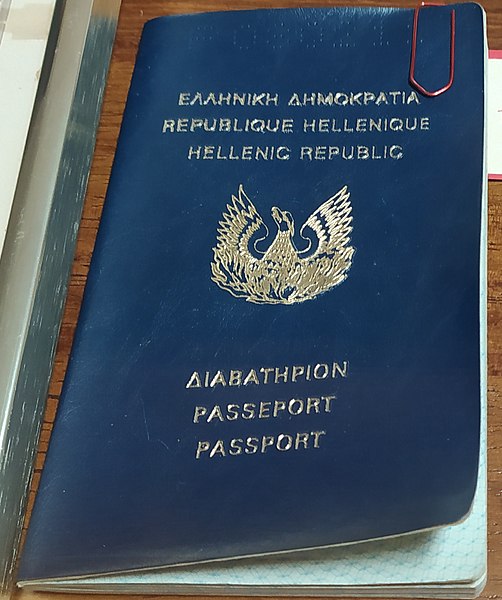The coat of arms of Greece or national seal of Greece comprises a white Greek cross on a blue escutcheon, surrounded by two laurel branches. It has been in use in its current form since 1975. Prior to the adoption of the current coat of arms, Greece used a number of different designs, some of which were not heraldic; the first heraldic design was introduced in 1832 and its main element, the blue shield with the white cross, has been the base for all other national coats of arms since then. The design is a heraldic representation of the Greek national flag adopted in 1822, which featured a white cross on a blue field.
Semi-official "Phoenix and Soldier" emblem, as it appeared on currency from 1971 to 1973
1973 passport bearing the second instance of the phoenix emblem
Minor version of the coat of arms with crown and laurel wreath on a 20-drachma coin (1833)
A Greek coat of arms with coloured laurel branches, used at an embassy
A laurel wreath is a round wreath made of connected branches and leaves of the bay laurel, an aromatic broadleaf evergreen, or later from spineless butcher's broom or cherry laurel. It is a symbol of triumph and is worn as a chaplet around the head, or as a garland around the neck.
A laurel wreath decorating a memorial at the Folketing, the national parliament of Denmark.
Apollo and Daphne
An actress performing a play. She wears a laurel wreath and stands in front of a statue of a woman from the Mausoleum at Halicarnassus (room 21, The British Museum, London)
Ovid with laurel wreath, common in poets








